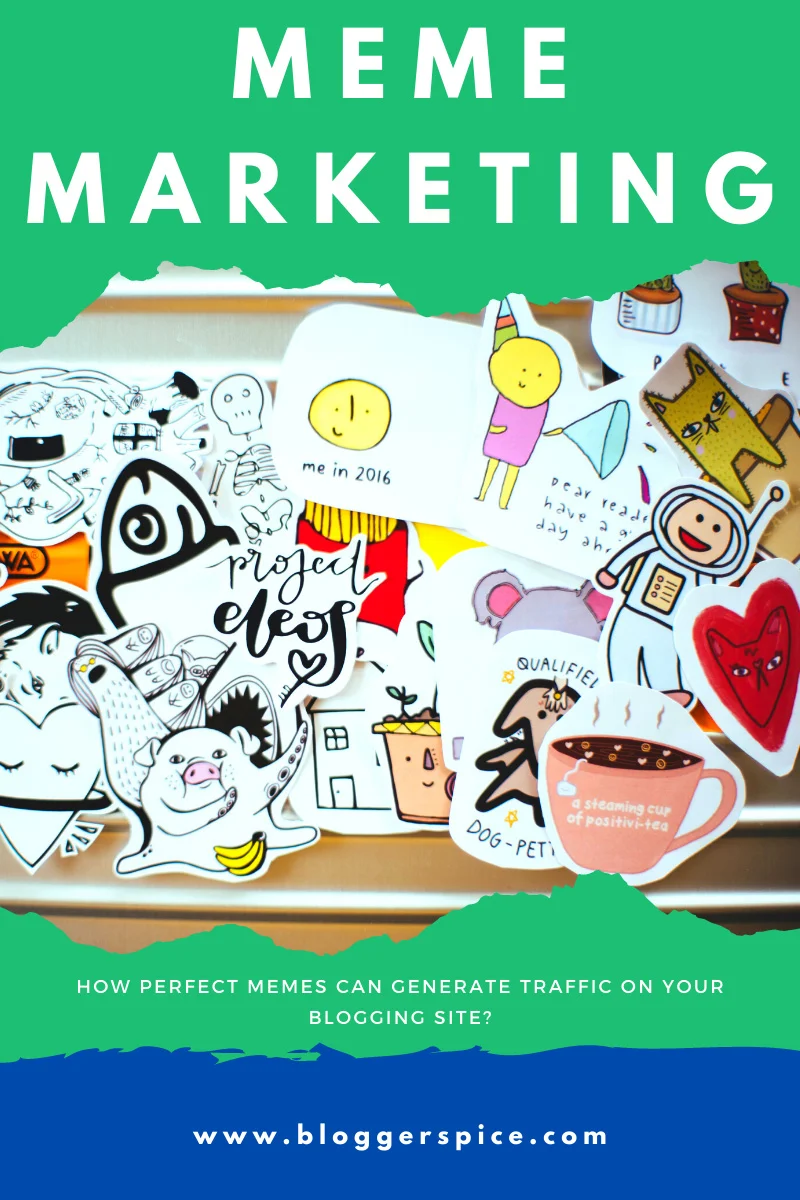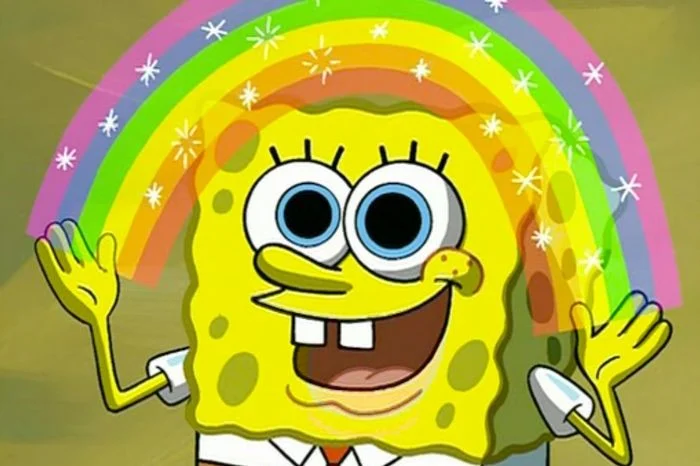Meme Marketing – How Perfect Memes Can Generate Traffic on Your Blogging Site?
Memes are one of the easiest ways to push traffic to a article, website or blog. They are quotes, pictures, stories, videos, or even audios online.
When we talk about social media marketing, many marketers undermine the value of engaging with your audience. Social media marketing majorly revolves around putting your message across and making it relevant enough to convince your audience to engage. Whether you prefer directly participating in dialogue or going through the content route, your marketing strategy should be highly engaging of your audience.
Over time, it has become evident that no matter what size of organization you represent, what industry domain you belong to, or your overall marketing mix, engaging with your audience is a matter of life and death. Your brand can lose its charm within moments if it is not relevant and relatable.

Hence, comprehending the value audience engagement holds for social media marketing campaigns, marketers came up with an incredible idea of deploying 'memes.' If you are not living under a rock, then you know what memes are and, over time, what this visual content aid has become.
According to visual content statistics,
74% of marketing content now comprises some visual support such as videos, infographics, and memes. A meme's idea is to represent a culture, mindset, trend, or behaviour that a multitude of people can relate to in a light-hearted manner.
That is the secret behind why memes go viral so quickly because most of the masses find the humour and relatability factor in it. And given this popularity, it was evident for it to become a marketing tool.
Let's find out how you can integrate memes in your marketing mix!

Using Memes for Marketing – How to Do It Right
The following are the top ten ways to use memes for content marketing by integrating them in your blogs.
1. Know Your Memes

Memes formats can be easy to deploy and even easier to create. However, the concept may seem simple enough, yet it is not. As a blogger, you need to identify and understand the origin of the image that has been used in the meme. The characters depicted to convey the message should not be controversial or have a seemingly problematic background that may put your website in jeopardy.
In addition to this, a crucial element is that the language needs to very specific. There is this special meme lingo and differentiating phrases that are of high importance to convey the right message through the native meme. If you have a very formal streamlined blogging site, a crude meme would not fit the format.
For instance, Pepe the Frog was a huge meme back in the day, and many brands marketed their way using the character until it went from being a harmless meme to deplorable alt-right hate symbol.
2. The Meme Should Echo Your Brand Voice
Every corporation wants to narrate their brand story through the content they create and strategize. Similarly, memes, although light-hearted is a core central marketing tool being utilized to do the same and being integrated within the blogging content.
It should stick to the brand voice you have developed across your website to convey the right message. Because if you stray away from the brand image you have created over the years and poke light-hearted fun at your audience in the form of a meme that doesn't resonate with them, you have done yourself bad.
A marketing blogger should instinctively know what content would be well-received by the brand's audience. It's better to define your brand voice beforehand clearly and how you will use it with a trending meme format to achieve a marketing objective rather than learning it the hard way.
3. Understanding the Value Memes Provide
Memes are cheap and widely sharable. As a self-proclaimed meme-enthusiast, I can bet you cannot say the same for any other marketing tool with as much confidence. It is essential to understand the value a single meme can hold for your brand reputation and your website's content. Sometimes so much that it becomes a make or break element for how people engage with your blogs.
There is no doubt that memes are the most sharable content on the internet in this day and age. The more your meme is shared, the more engagement with your audience can go a long way toward creating brand awareness. For instance, big luxury brands like Gucci and Balenciaga understands the value that a meme can have to market their product and doesn't shy away from taking a jab at it.

4. Leveraging Trends
The best and easiest way to decide upon which meme to go with is to pick the most recent trend. Leveraging trends to market your newest product launch, a generic advertisement, or just to increase your social media presence is a great way to do it right in a fool-proof way.
The perspective here is that the trend is already circulating. There is a high possibility that there is already a meme denoting the trend or the origin of getting it started. As a blogger taking the campaign forward, your job is to make it fit your brand story and objective through your content.
For instance, one of the best examples of an ever-green meme would be that of Simpsons. You can take up any trending scene from the animation and associate your product with one of the characters to create a viral blog post.
5. Memes Should Be Updated and Relevant
Many people don't understand that a typical meme does not have a life cycle for many months. If you are planning to milk a meme for more than two weeks, then you are clearly doing it wrong. After a while, you will learn that you are using a stale concept that the audience no longer takes an interest in, and your competitors have steered ahead.
That is why it is crucial to know when to stop. It is all hunky-dory while all of a sudden, things can go south where you never know how much of the audience can take it and then decides to retire the meme entirely. That is why try to make updated and relevant memes a part of your blogging content. Use a meme until its average life span of merely some days, stretching up to a week and then move on to the next and new one for your proceeding blogs.
6. Remaining Within the Ethical Boundaries
The human psychology is at play when we talk about humor. What you consider as a light-hearted jab at someone's cultural perspective might take a turn of events and become unethical for them. Therefore, it is imperative to remain within the ethical boundaries of using a meme as a joke or for fun as a representation of your brand because your brand image is on the line.
The key to focus here is to put your brand ideology across through your blogs rather than making it a savage retort towards an opposite competitor, religion, or culture. For instance, memes that have racist undertones, racial slurs, deploy sexist jokes or depict a black-face character. All of these are a huge offence on the greater scheme of things, which is entirely unethical, to begin with.
7. Not Overdoing It
Just because your most recent marketing campaign was launched through a meme doesn't mean that every marketing aspect from your social media to blogs and general website appearance should be filled with memes. A meme cannot be the epicentre of your marketing campaign. It must definitely be a part of it, but basing off a vital product launch or advertisement over a meme is overdoing it.
Even though given the popularity of memes, it is a widely sharable and flexible medium. There still is a limit to using it. Your audience should not think of your brand as a joke or take it casually. They should know that jokes apart, you are here to dominate the market and talk business when it comes down to your content's message.
8. Nothing Beats the Original

Earlier I mentioned how you deploy an already created meme format. Well, guess what? Nothing beats the original. Ever wondered, all the meme formats circulating must have been conceived by someone, and that is their original idea. So why not can you come up with your own?
Nike and Nickelodeon are some of the major brands that created their own original meme formats. Nike played around with its slogan of "Just Do It!" and created various other funny phrases close to it.
Nickelodeon, on the other hand, used one of the most popular cartoon characters, Sponge Bob, to take it up in the meme market. For instance, you are a writing service provider and panning to create your own character or slogan that represents your service line and integrate it into your blogs as a searchable keyword.
9. Deploying Customer Creativity
Customer advocacy is a great marketing tactic that has been used by brands time and time again on various occasions to increase customer engagement, participation, and interest in their product or business. A similar tactic can work when it comes to meme marketing.
However, the key here is that your customers should truly be in love with your brand and well aware of what it represents. Otherwise, this can be a failure if your customers are not of that mark.
Supposedly, you cannot come up with your original meme template, so you create a contest and engage your customers. Ask them to create a creative meme template around your brand or product and make use of it in a highly engaging blog post. While you don't have to spend a dime in deploying one of the best out of all the submissions, you will be getting
10. Differentiating Between Ill-Cited and Positive Content
Finally, one of the most critical factors is to know the difference between ill-cited and positive content. The point here is that where there is good being exploited, there is a wrong side to a trend too. When it comes to memes, they are either a positive, different perspective, usually funny uptake for a matter.
But on the flip side, there are "dank" memes too.
The term dank here refers to an overuse of a passing trend in a weird or dark way, usually in the form of a meme.
Such type of content overshadows the good and puts a slightly negative message across. Where some people may find it funny because humour is subjective, most people feel ill at ease and unconvinced with such content. Therefore, make sure your blogs don't integrate any such memes.
Conclusion
All in all, memes are not a phase. The content medium has been going on for over a decade now with no signs of slowing down or fading into the oblivion from which it is originated. Memes are here to stay, and as the trend keeps on changing in the market space, many new memes of all types will continue to be created around it.
Therefore, it is only in the bloggers best interests and the brands they represent to integrate memes, meme formats, and templates for their brand's marketing content and campaigns. But you should be keeping a close watch on remaining within the standard terms and conditions attached to it.

Claudia Jeffrey
She is currently working as a Sr. Digital Analyst at Crowd Writer, an excellent platform that offers thesis writing service. She is an avid enthusiast of new marketing trends, such as memes and funny video content. She has done significant research on these trends to help the marketing industry grow.

Post a Comment